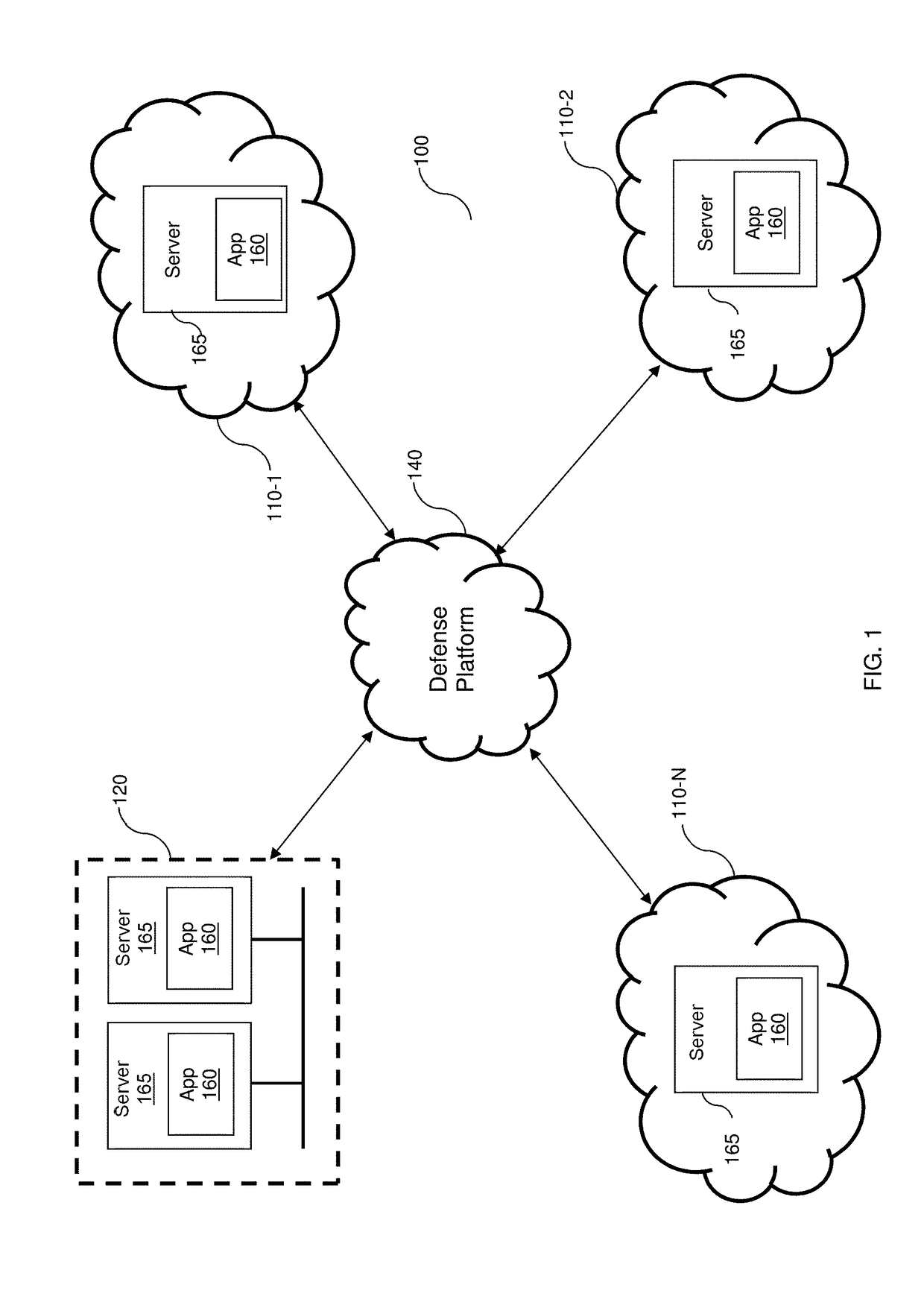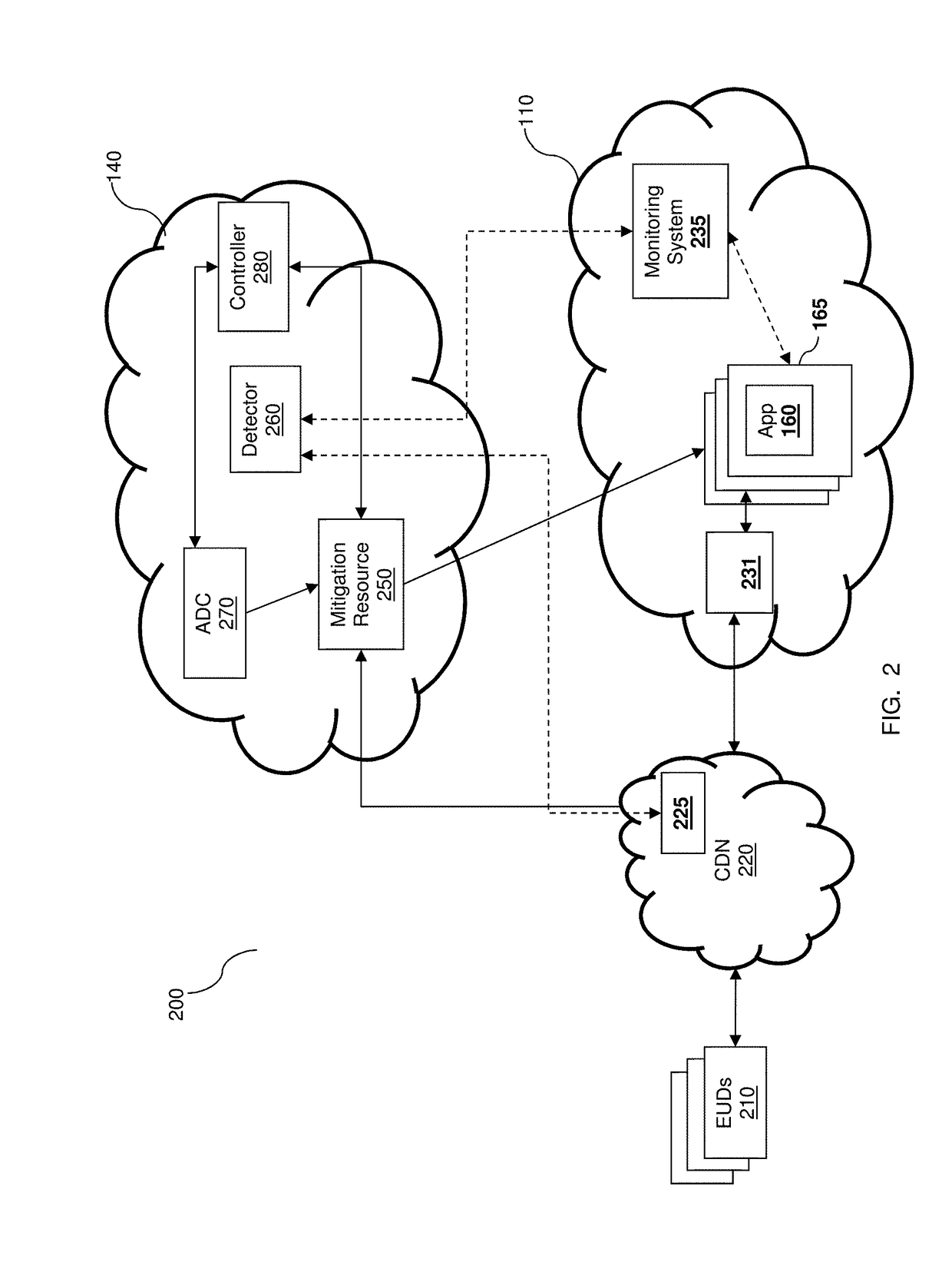DETECTION AND MITIGATION OF SLOW APPLICATION LAYER DDoS ATTACKS
a technology of application layer and attack, applied in the field of cybersecurity systems, can solve the problems of increasing the subjectivity of computer systems, affecting the security of public cloud-hosted applications, and manipulating behavior,
- Summary
- Abstract
- Description
- Claims
- Application Information
AI Technical Summary
Benefits of technology
Problems solved by technology
Method used
Image
Examples
example implementation
[0069 of fuzzy logic engines for detecting traffic attributes related to DDoS and DoS can be found in U.S. Pat. Nos. 7,681,235 and 7,836,496, assigned to the common assignee, which are hereby incorporated by reference.
[0070]FIG. 4 shows an example block diagram of the detector 260 according to an embodiment. The detector 260 includes FIS engines 410-1, 410-2, and 410-3, each of which is implemented as the FIS engine 300 (FIG. 3). The FIS engines 410-1, 410-2, and 410-3, respectively, determine if the CPS, NCPS, and ACS feature demonstrate normal or abnormal behavior.
[0071]The detector 260 also includes an expert system 420, and optionally one or more threshold-based (TH-based) detection engines 430. Each detection engine 430 operates as a single-dimension detector based on a single feature and a baseline threshold.
[0072]As shown in the example simulation 600 shown in FIG. 6, in a single dimension detection, a feature value is validated against one or more baseline thresholds. Detect...
PUM
 Login to View More
Login to View More Abstract
Description
Claims
Application Information
 Login to View More
Login to View More - R&D
- Intellectual Property
- Life Sciences
- Materials
- Tech Scout
- Unparalleled Data Quality
- Higher Quality Content
- 60% Fewer Hallucinations
Browse by: Latest US Patents, China's latest patents, Technical Efficacy Thesaurus, Application Domain, Technology Topic, Popular Technical Reports.
© 2025 PatSnap. All rights reserved.Legal|Privacy policy|Modern Slavery Act Transparency Statement|Sitemap|About US| Contact US: help@patsnap.com



